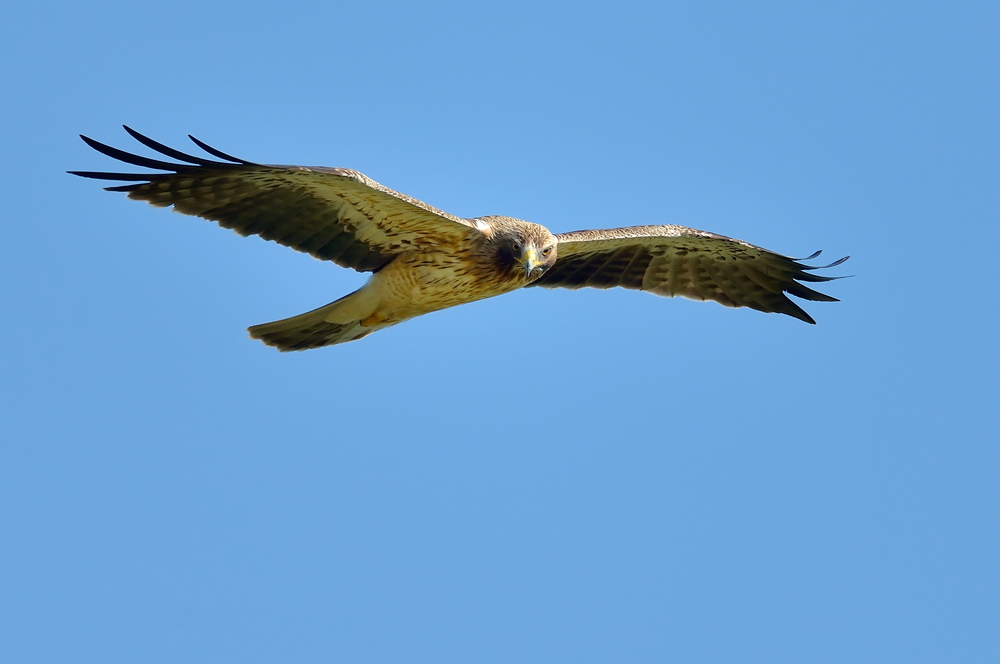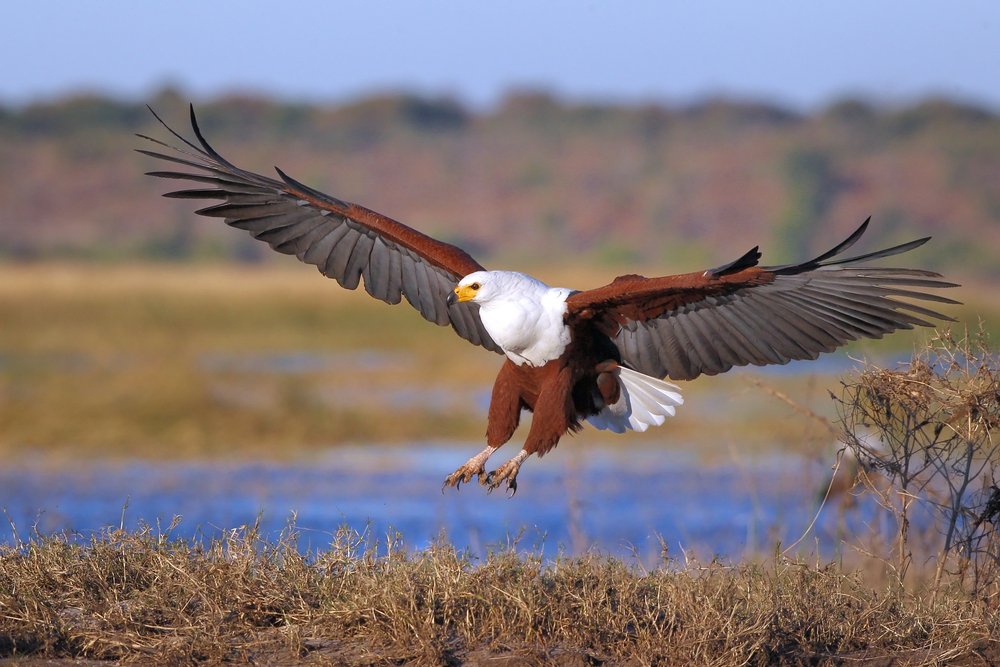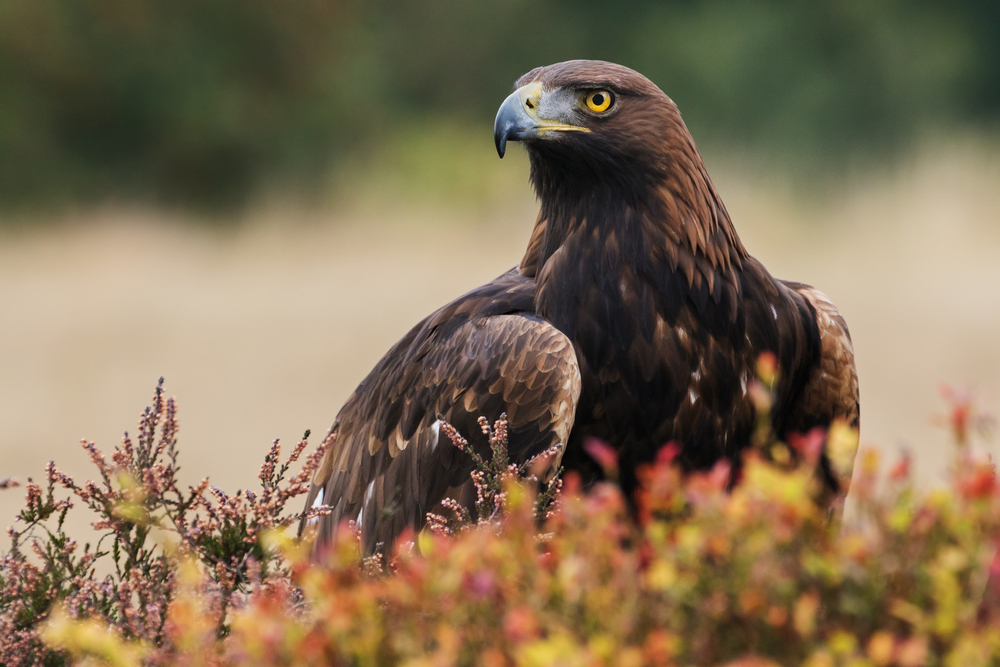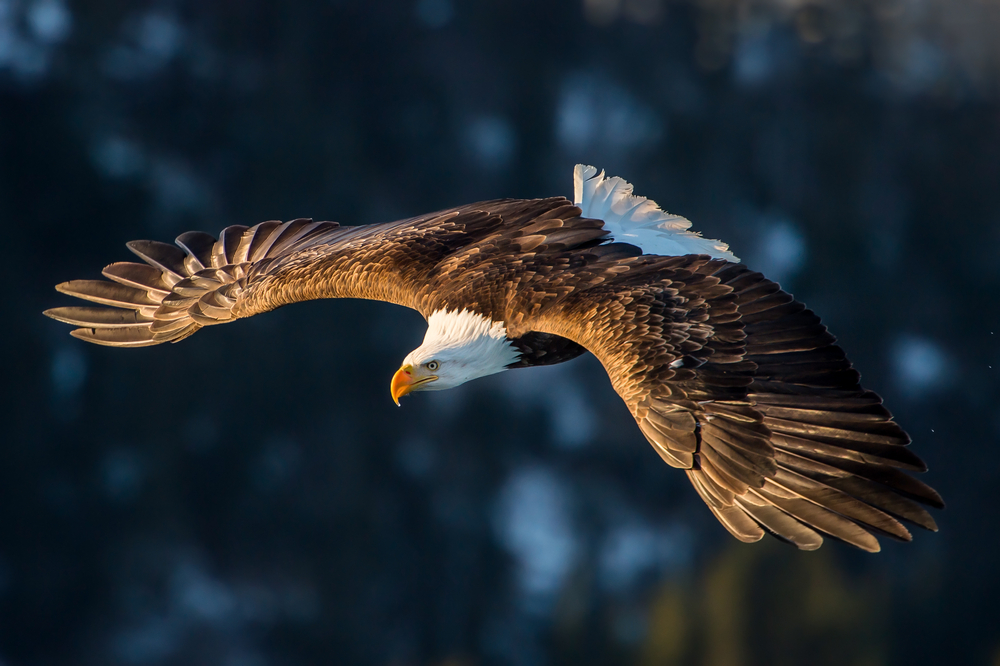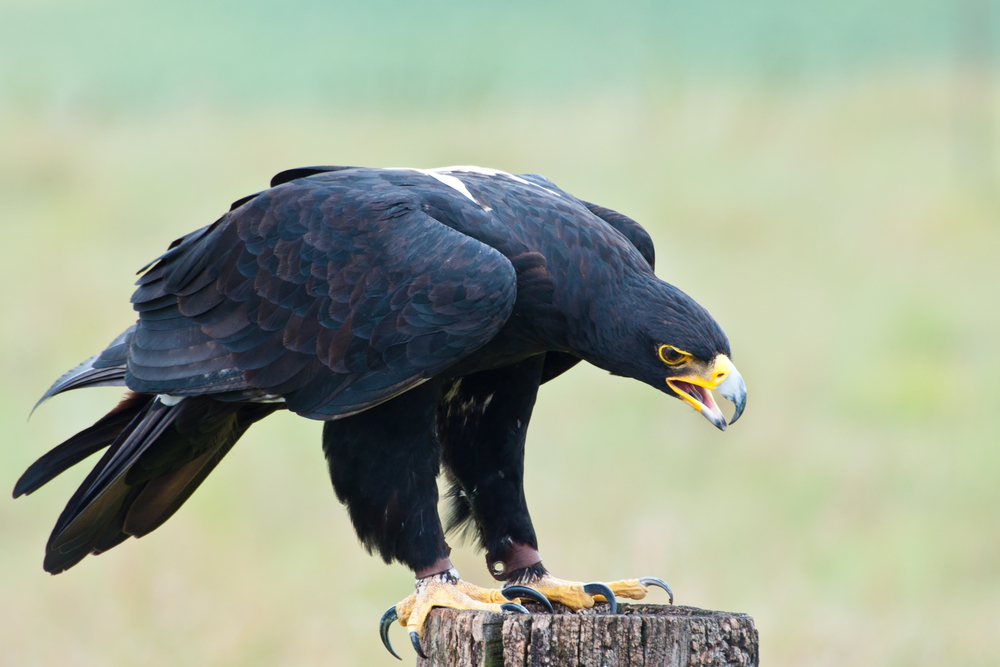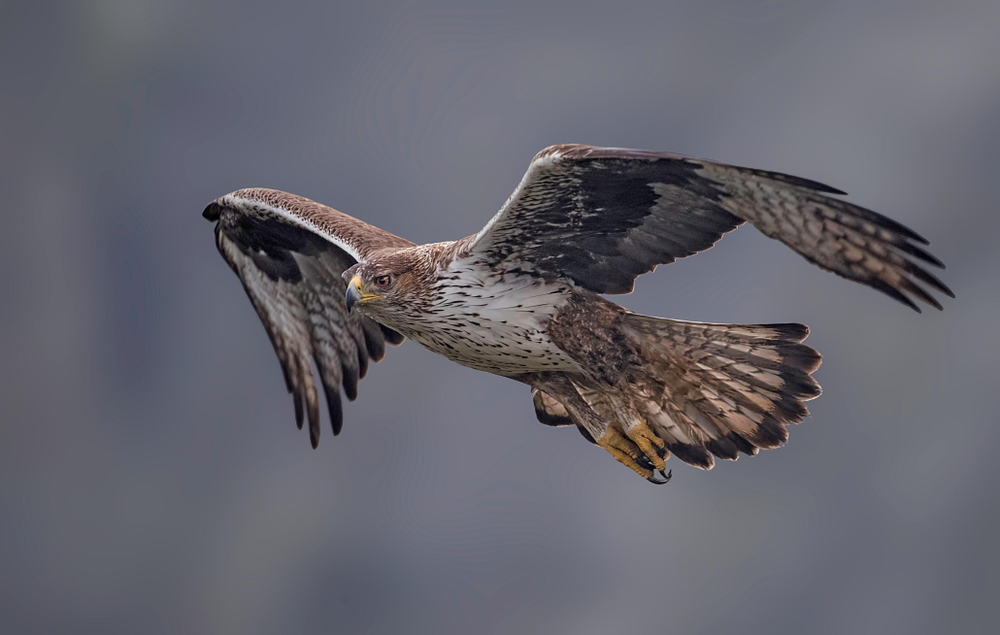The Booted Eagle’s closest relatives are other small eagles within the genus Hieraaetus, particularly the Little Eagle (Hieraaetus morphnoides) of Australia. They share many similarities in size, plumage, and behavior, and are sometimes considered part of a superspecies group.
About
The Booted Eagle is one of the smaller species of eagles, admired for its agility, adaptability, and wide range across Europe, Asia, and Africa. Despite its modest size compared to larger eagles, it is a skilled hunter and strong flier, easily recognized by its feathered legs—giving rise to its name—and its distinctive plumage patterns. The species has two main color morphs: a pale form, with creamy underparts and contrasting dark flight feathers, and a dark form, with overall brownish plumage. Both morphs share a characteristic pale panel on the wings that is visible in flight.
Measuring 40–50 cm (16–20 in) in length with a wingspan of 110–135 cm (3.5–4.4 ft), the Booted Eagle is small but powerful. It preys on birds, reptiles, and small mammals, often capturing them in swift mid-air chases or rapid dives from soaring flight. Its ability to adapt to different environments has allowed it to occupy diverse habitats, from woodlands and mountains to open plains and savannas.
Breeding typically occurs in spring. Pairs are monogamous and return to the same nesting territories year after year, building large stick nests in tall trees or occasionally on cliffs. The female usually lays two eggs, and both parents take part in rearing the young. The chicks fledge after about 50–55 days but remain dependent on their parents for several weeks. In the wild, Booted Eagles may live up to 15–20 years.
The scientific name of the Booted Eagle is Hieraaetus pennatus, and it belongs to the family Accipitridae, which includes hawks, kites, and other eagles. Although classified as a species of Least Concern globally, it faces localized threats from habitat loss and disturbance at nesting sites. Migratory populations travel thousands of kilometers, spending summers in Europe and winters in Africa, making this eagle a truly wide-ranging raptor.
Physical Characteristics
The Booted Eagle (Hieraaetus pennatus) is a small to medium-sized bird of prey, notable for its feathered legs—or “boots”—which give the species its name. Despite its smaller size compared to many eagles, it is a powerful and agile hunter.
Plumage:
The Booted Eagle comes in two distinct color morphs:
-
Light Morph: Pale underparts with dark flight feathers and a contrasting pale head and body.
-
Dark Morph: Overall dark brown to blackish plumage, with subtle lighter markings on the underwings.
Both morphs show a characteristic pale patch on the “shoulder” (upper wing coverts) when seen in flight.
Head and Face:
They have a relatively small, rounded head with piercing yellow eyes and a sharply hooked beak. Their feathered legs distinguish them from other similarly sized raptors.
Body and Wings:
The Booted Eagle has a compact, stocky body with broad wings and a relatively short, square-tipped tail. Their feathered legs provide insulation at higher altitudes and give them a distinctive, full-legged profile.
Size:
-
Length (Body): 16 to 21 in (40 to 53 cm)
-
Wingspan: 43 to 51 in (110 to 130 cm)
-
Tail Length: 7 to 9 in (18 to 23 cm)
Weight:
-
Males: 1.3 to 2 lbs (0.6 to 0.9 kg)
-
Females: 2 to 2.5 lbs (0.9 to 1.2 kg), larger and heavier than males.
The Booted Eagle’s feathered legs, variable plumage, and compact size make it one of the most distinctive small eagles in its wide range across Europe, Africa, and Asia.
Reproduction
The reproductive cycle of the Booted Eagle reflects its life as a migratory raptor, with strong site fidelity and high parental investment.
1. Mating and Courtship:
Booted Eagles are monogamous, forming long-term pair bonds. Courtship includes aerial displays such as circling flights, dives, and talon-grappling. Pairs often return to the same breeding territory year after year.
2. Nesting:
Nests are usually built in tall trees or occasionally on cliffs, constructed from sticks and lined with green leaves. A pair may maintain several nests within their territory, alternating between them across seasons.
3. Egg-Laying:
The female lays 1 to 3 eggs, most commonly 2, between April and May in Europe and parts of Asia. Eggs are white with faint reddish-brown markings.
4. Incubation:
Incubation lasts about 37 to 40 days, carried out mainly by the female while the male supplies food.
5. Raising Chicks:
Chicks hatch covered in white down. The female broods them intensively for the first two weeks, while both parents provide food. Sibling rivalry is frequent, with the stronger chick often outcompeting the weaker one.
6. Fledging and Independence:
Young Booted Eagles fledge at around 50 to 55 days of age but may remain dependent on their parents for several more weeks while honing their hunting skills.
The reproductive strategy of the Booted Eagle emphasizes low clutch size, intensive parental care, and delayed independence, typical of small to medium raptors with long lifespans and stable pair bonds.
Lifespan
The Booted Eagle is a long-lived small eagle, with survival influenced by migration risks, prey availability, and human pressures.
Lifespan in the Wild:
In natural conditions, Booted Eagles typically live 12 to 16 years, though some individuals may reach 20 years if they survive the challenges of migration and early life. Mortality is highest among juveniles during their first migration southward.
Lifespan in Captivity:
In conservation facilities or aviaries, Booted Eagles may live 20 to 25 years thanks to steady food supplies, veterinary care, and protection from hazards such as hunting and electrocution.
Threats to the Booted Eagle:
-
Migration Risks: Long-distance migration exposes them to exhaustion, storms, and hunting.
-
Habitat Loss: Logging and land conversion reduce nesting and hunting grounds.
-
Persecution: In some regions, eagles are still persecuted as threats to game or poultry.
-
Electrocution: Collisions with power lines are a significant mortality factor for young and adult birds alike.
-
Food Shortages: Declines in small bird and mammal populations reduce breeding success.
Care and Protection:
Conservation measures include protecting breeding territories, insulating power lines, and safeguarding migratory routes. These are essential to stabilizing populations across their European, Asian, and African ranges.
The Booted Eagle’s lifespan reflects its status as a migratory raptor—long-lived but highly vulnerable to human-made threats and the dangers of seasonal movements.
Eating Habits
The Booted Eagle is a carnivorous raptor with a diet centered on small to medium-sized prey, using agility and speed to hunt effectively in woodlands, open fields, and rocky areas.
Diet:
Their diet consists mainly of small birds and mammals, including pigeons, partridges, corvids, rabbits, and hares. They may also hunt reptiles such as lizards and snakes, and occasionally take large insects when other prey is scarce.
Hunting Strategy:
Booted Eagles are diurnal hunters, active during daylight hours. They use a combination of soaring flight and perch-hunting:
-
Soaring: They circle at moderate height, scanning the ground for movement before diving rapidly onto prey.
-
Perch-Hunting: From trees or rocky outcrops, they watch quietly, then launch swift, surprise attacks.
Killing Technique:
Prey is caught and subdued with strong talons. Smaller animals are killed instantly on impact, while larger prey is dispatched with crushing grips and sharp beak strikes.
Feeding Behavior:
Booted Eagles usually hunt alone, though pairs sometimes hunt cooperatively during breeding season. Prey is often carried to a perch or nest and plucked or torn apart before feeding.
Special Considerations:
-
Dietary Flexibility: They adapt to local prey availability, shifting between birds, mammals, and reptiles.
-
Seasonal Variations: During migration and in wintering grounds, their diet changes based on regional prey abundance.
-
Juvenile Training: Parents deliver fresh kills to chicks, gradually introducing live prey as fledglings practice hunting skills.
The Booted Eagle’s versatile diet and adaptable hunting methods make it a resilient predator, capable of thriving in varied environments across its migratory range.
Uniqueness
The Booted Eagle is one of the smallest true eagles, yet it is remarkable for its agility, plumage variety, and widespread range.
Feathered “Boots”:
The species is named for its fully feathered legs, or “boots,” which extend down to the toes. This trait provides insulation and gives the eagle its distinctive appearance.
Two Color Morphs:
Booted Eagles are unusual among raptors in displaying two distinct plumage morphs:
-
Light Morph: Pale underparts contrasting with darker flight feathers.
-
Dark Morph: Entirely dark brown to blackish plumage.
This variation can occur even within the same breeding population.
Small but Powerful:
Though only about half the size of larger eagles such as the Golden Eagle, the Booted Eagle is an agile and powerful hunter, capable of tackling prey larger than itself.
Migratory Lifestyle:
Unlike many larger eagles, Booted Eagles are long-distance migrants, breeding in Europe and Asia but wintering in Africa and the Indian subcontinent. This exposes them to diverse habitats and prey types across continents.
Adaptability:
They are versatile, thriving in woodlands, cliffs, open fields, and even near human-modified landscapes, as long as prey is available and nesting sites are secure.
The Booted Eagle’s combination of feathered boots, variable plumage, and migratory adaptability makes it one of the most unique and fascinating small eagle species.
Be the First to Share Photos of This Species.
FAQ’s
1. What is the closest species to the Booted Eagle?
2. How does the Booted Eagle compare to other eagles?
The Booted Eagle is smaller and lighter than most eagle species, weighing only 1.3–2.5 lbs (0.6–1.2 kg), yet it remains a skilled predator.
Unlike the massive Golden Eagle or White-tailed Eagle, Booted Eagles rely on agility, speed, and maneuverability. Their feathered legs (“boots”) and two distinct color morphs make them particularly distinctive.
3. What national parks provide the best chance to see a Booted Eagle?
Booted Eagles breed in southern Europe, North Africa, and Asia, and migrate to Africa and the Indian subcontinent for winter.
Some of the best places to see them include Doñana National Park (Spain), Camargue Regional Park (France), Keoladeo National Park (India), and Keenya’s Tsavo National Park, where they can be observed during migration and wintering.



































































